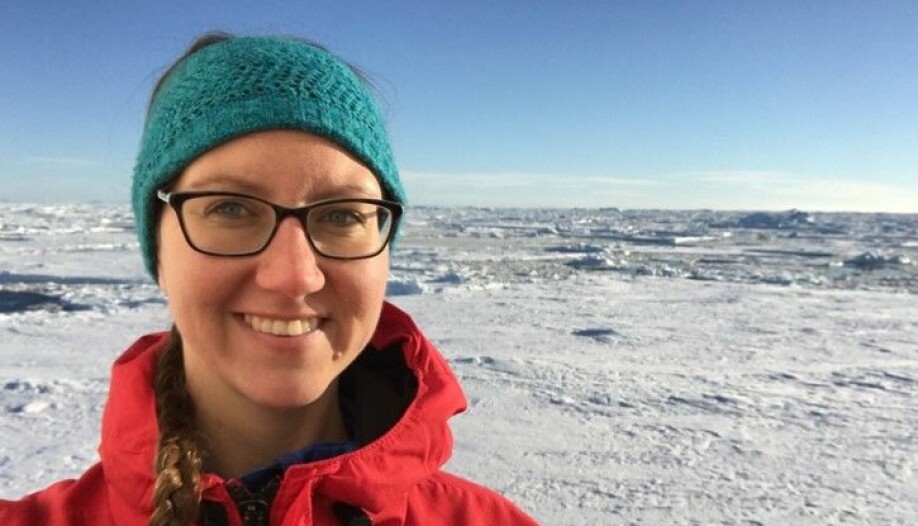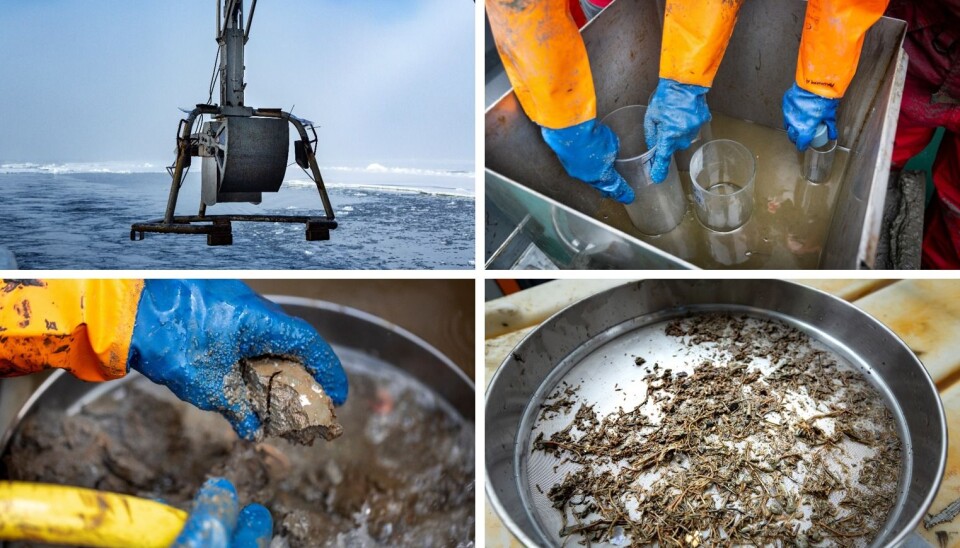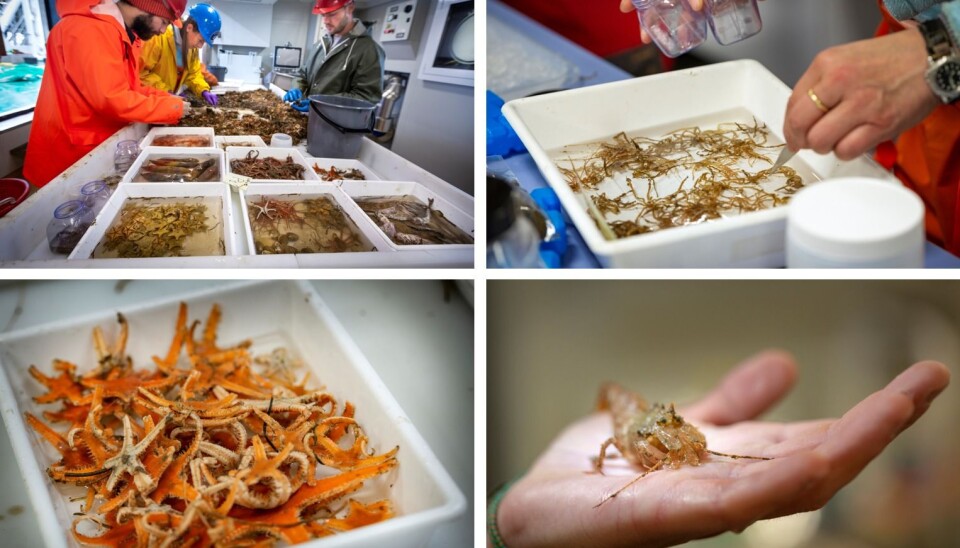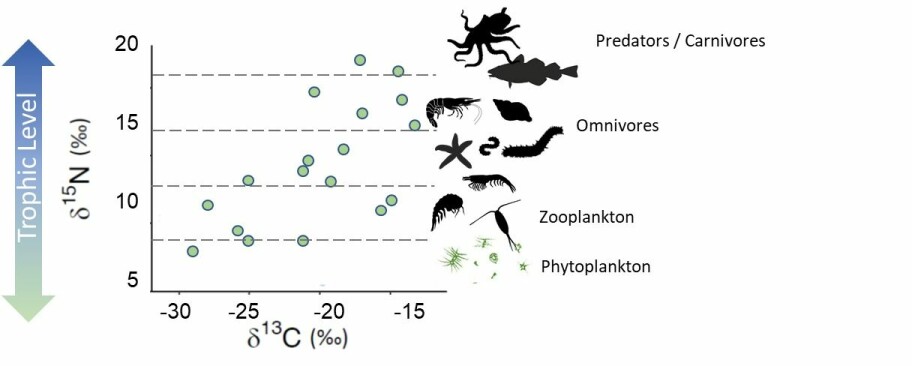
Where food is delivered only once a year
Imagine living at a place where food is available for only a few short weeks each year. What sounds impossible is reality for hundreds of different animal species thousands of meters beneath the ocean surface.

Sea cucumbers, brittle stars, clams and worms are among the animal groups inhabiting the bottom of our oceans. Sunlight does no reach the seafloor much below 100 m, leaving the majority of these benthic animals not only subjected to complete darkness, but also without local production of fresh plant-based food. Consequently, they feed on what is falling from above, like remains of phytoplankton and zooplankton (and their excrements) and other small organisms inhabiting the sunlit surface ocean. Life at the seafloor could be easy if the delivery of food was not such a rare event.
Living in the Arctic makes food deliveries rare events
In polar oceans like the Barents Sea and Arctic Ocean, sunlight is only present for part of the year, limiting plant-growth to a brief period. The amount of food sinking to the seafloor dramatically increases in the spring and summer when phytoplankton and sea ice algae grow. In the shallow (<350 m) Barents Sea, the entire year’s stock of food for the benthic animals may arrive in only a few short weeks during the very short Arctic summer. In the deep (1000-4000 m) Arctic Ocean, there is a longer lag between phytoplankton growth at the surface and the arrival of the food at the seafloor, as it takes time for dead phytoplankton and other remains to sink through thousands of meters of water. During this long journey, the phytoplankton remains are exposed to microbes and zooplankton, leaving the animals at the deep-sea seafloor with significantly less food of poorer quality than their counterparts in shallow seas. During winter, there is virtually no phytoplankton available that could sink to the seabed all across the Arctic. So how do benthic animals survive the winter? What do they eat? What sounds like straightforward questions is all but simple to answer.

Catching animals you cannot see
To find out what benthic animals eat and how they survive in the Arctic demands first of all getting a hold of them. Living far beyond the depths of scuba divers, we use trawls and corers to collect the animals for our investigations. The trawl is dragged behind a ship and collects large (>1 cm) animals living on and near the seabed, while the box core collects a cube of undisturbed mud from the seafloor. To get the small animals out of the mud, we pass the mud through a sieve. It is exciting to collect animals from the seafloor because you cannot see what you are going to collect! It is not until after we have sieved the box core sample and sort the trawl that we are able to see the full diversity of the seafloor community. After sorting the samples, we do our best to identify the animals. In the deep Arctic Ocean this is particularly difficult because the region is so under-sampled that few are familiar with the fauna. It is likely that we will find species that have never been seen before.
How to detect what an animal has eaten
Having collected and identified the animals, we still need to find out what they ate. Historically, ecologists analyzed an organism’s stomach contents to determine what they ate. However, this can only be done for large animals that are easily caught (e.g. fish). To determine the diets of small animals like those we find in the benthos, we use chemical tracers called stable isotopes. Stable isotopes are found in all organisms, but their composition differs between organisms and depends on what animals eat. They are thus suited to detect what an animal has ingested, and is what we use in our quest to understanding the nutrition of Arctic benthic animals.
What do we expect to find?
We have no results quite yet, but we do have an idea (hypothesis) of what we may find. Within the Barents Sea, we expect there to be differences in organism diets as we travel northward because there is a strong gradient of primary producer biomass in the Barents Sea. There is also a greater contribution of sea ice algae in the north. Because sea ice algae grow in the sea ice brine channel system (a maze of small interconnected tubes) with limited access to carbon dioxide, they have a distinct isotopic signature compared to phytoplankton in the water column. Therefore, we can tell from the isotopic composition of benthic organisms whether they seasonally consume sea ice algae that sink to the seafloor from the surface. We expect seafloor organisms to consume more sea ice algae in the northern Barents Sea particularly during spring when they are abundant. We also hypothesize that benthic organisms feeding on detritus (dead organic particles) in the deep Arctic Ocean will not show strong seasonal changes in isotopic composition because they consume mostly “old food” that has been mixed into the sediment.

Heading to the unknown Central Arctic Ocean
While writing these lines, the Norwegian research icebreaker ‘Kronprins Haakon’ is breaking through the sea ice in the Nansen Basin and onwards to the Amundsen Basin of the Central Arctic Ocean – a region we know far less about than the Barents Sea. The longer ice cover of thicker sea ice in this region makes it difficult to access and sample. Deep-sea regions around the globe remain under-sampled because the sheer depth of the site also makes collecting samples difficult, time-consuming and expensive. The research cruise is a unique opportunity to collect samples from one of the world’s least-explored oceans and we hope that our samples will help us to fill significant gaps in knowledge about the Central Arctic Ocean benthos.
Climatic changes also affect animals at the seafloor
It is important that we understand the food web, even at the seabed, because the Arctic is facing significant changes brought on by climate change. As the cover of sea ice declines, surface ocean dynamics change which directly alters the amount of phytoplankton and sea ice that is exported to the seafloor and therefore the amount of food for the benthic community. Furthermore, reduced sea ice in the Arctic Ocean will also allow for the northward expansion of fisheries, shipping, and other exploitative activities that may impact the seafloor. The more we understand about how the seafloor in the Central Arctic Ocean functions now, the better we will understand its vulnerabilities to these kinds of stressors in the future.








